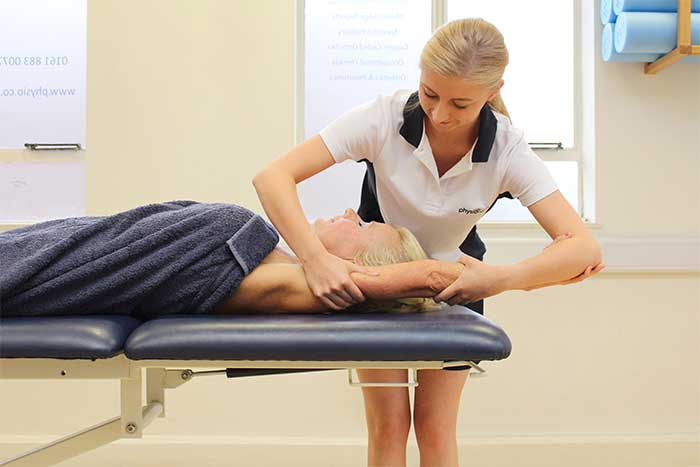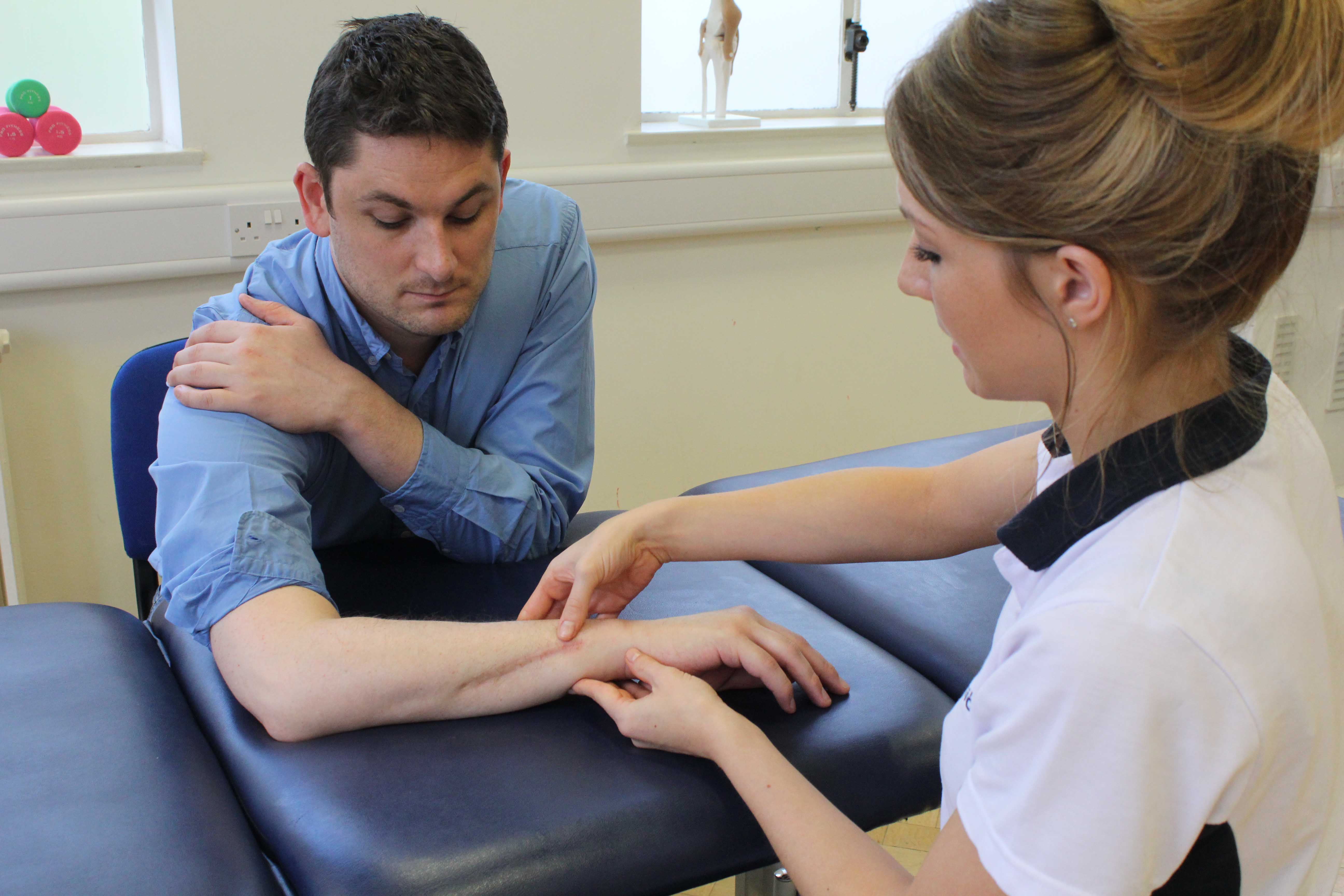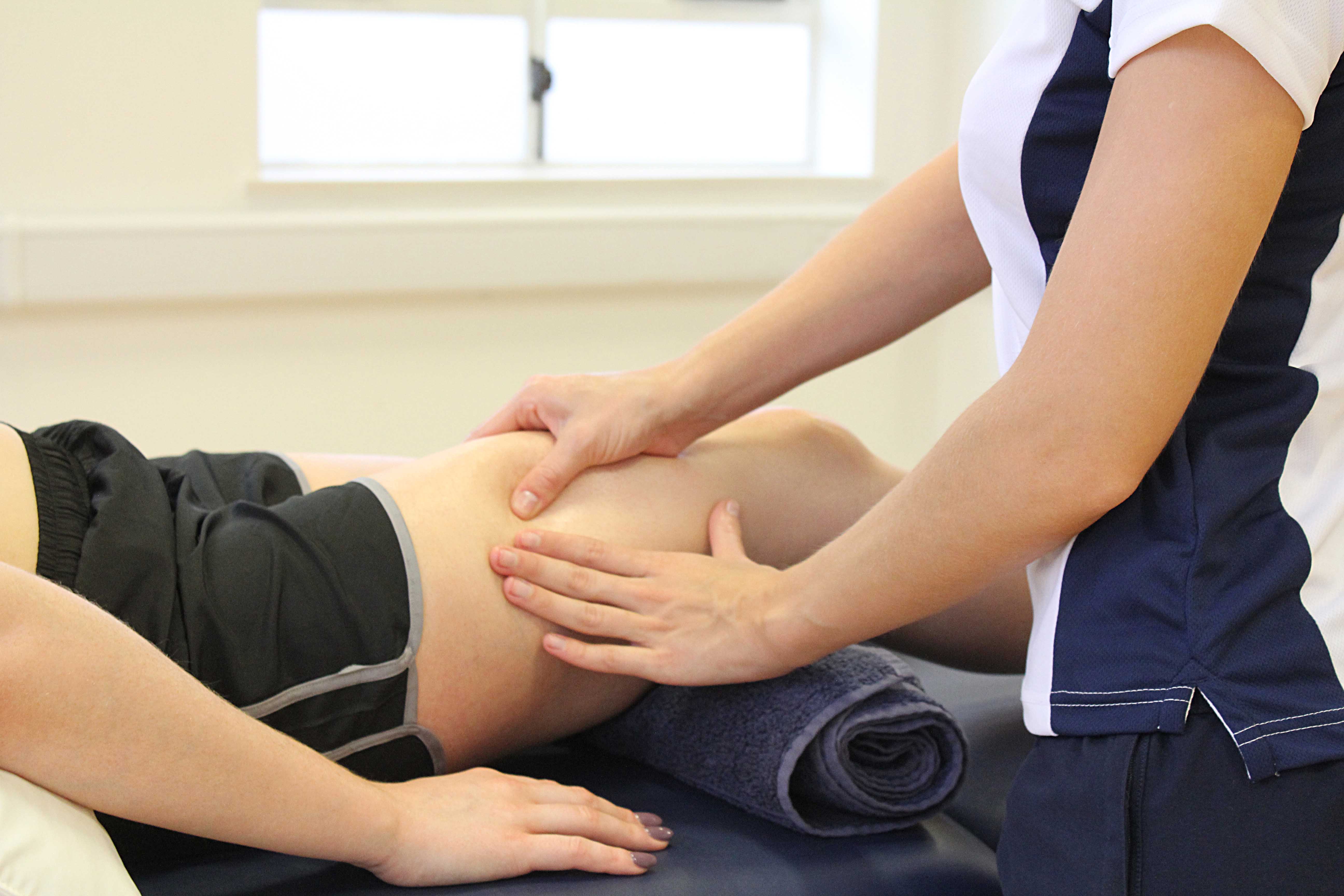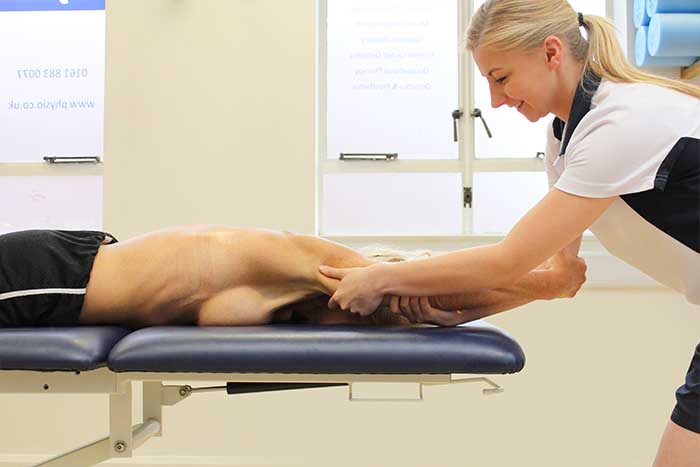Scarring occurs when collagen fibres are produced over an injury or after surgery as part of the healing process. Scars are areas of fibrous tissue that replace normal skin and can form internally and externally. Scars are the result of biologic repairs in the skin and soft tissues in the body. Scar tissue is more fibrous than original tissue and differs in texture. Collagen fibres can grow in all directions, causing scars to be visible and pronounced. Massage is an effective treatment to help reduce scar tissue formation and help restore tissue flexibility. Massage therapists at Physio.co.uk can use massage to treat a range of conditions caused by scarring.
What type of massage is used for tight scarring?
There are many types of massage that can be used to treat scarring. The types of massage used for scars are:

When can massage help scarring?
Massage can help treat scarring on many circumstances. These circumstances include:
 Above: Massage of scar tissue to increase tissue extensibility and reduce scar visibility
Above: Massage of scar tissue to increase tissue extensibility and reduce scar visibilityMassage helps treat scarring on many occasions. Massage helps to reduce scar tissue post injury, post-surgery and for acute pain.
Massage is an effective treatment to treat scarring after injury has occurred. Injuries within the soft tissues are repaired with scar tissues. Scar tissue is made from tough, inflexible tissues known as collagen fibres. Scar tissue binds itself together in all directions in attempt to draw damaged fibres back together. Leaving scar tissue untreated can cause re-injury, pain and loss of soft tissue function. Massage is used to treat scarred areas to help break down collagen fibres and realign tissues back into normal form. Specific massage techniques such as frictions are used on scarring. Frictions are performed with deep pressure and firm strokes.
Massage also helps to treat scars post-surgery. For surgery, typically incisions are made through the skin to be able to access into the body. This involves cutting through layers of skin which results in scarring. Some scarring can be painful post-surgery and also begin to restrict movement in the skin. Massage is a common treatment used post-surgery to help reduce the formation of scar tissue. Massage help break down fibres, reducing pain and increasing movement.
Massage helps reduce pain caused by scar tissue. When scar tissue is formed it can damage skin nerves around an area. When nerves are irritated, pain is produced. Massage can help reduce the pressure of the scar tissue on the nerves. Massage applies force onto the tissue and uses friction movements to relieve tightness. Once tightness is relieved, pressure is taken off the nerves.
What are the physiological effects of receiving a massage for scarring?
Massage can produce many important physiological effects on the body. The physiological effects of massage for scarring include:
 Above: Massage of scar tissue to increase tissue extensibility and reduce scar visibility
Above: Massage of scar tissue to increase tissue extensibility and reduce scar visibilityMassage breaks down and helps realign collagen fibres. Collagen fibres are what make up scarring in the tissues. Collagen fibres are produced to help assist injury to the skin and soft tissues. An increase of new cells is brought to the injury site to repair and heal damaged tissue. The formation of collagen is layered into all different directions across many existing tissue fibres. Fibres become bundled and can resist stretching force. Massage helps to align the collagen fibres to allow them to return to normal. The realignment of fibres make the tissue more flexible and tolerable to force.
Massage also increases the temperature of soft tissues around scarring. Massage increases temperature by friction against the skin. Soft tissues should be relaxed and wavy in configuration. When scar tissue forms, it becomes rigid and tough. By increasing temperature, it allows fibres to relax and movement in the tissue to be increased.
Massage helps to increase tissue elasticity. Massage applies pressure to an area of scarring to stretch and elongates fibres. Stretching muscle fibres is important to help restore flexibility after scar tissue is formed. When muscle fibres are stretched, muscle spindles record the change in length to the muscle and send signals to the central nervous system. The more the muscle fibres are stretched, the muscle spindles come accustomed to the new length and elasticity is increased.

What are the benefits of receiving a massage for scarring?
Massage to treat scarring has many benefits. The benefits of massage for scars include:
Treating scars with massage is beneficial to increase healing. Scars are formed as part of the body's natural healing process of soft tissues. Hard, fibrous tissues called collagen fibres are produced to assist the healing of damaged fibres. Scar tissue is layered in many directions which can prevent proper healing of the tissue fibres. Massage can be used to help break down collagen fibres and realign them back into normal form. Massage also increases blood circulation to the area which carries oxygen and nutrients to damaged cells. Oxygen and nutrients play a large part in repairing and healing damaged tissues.
Massage can also help increase flexibility around areas of scarring. Scars around injury sites can limit and decrease flexibility of muscle tissues. When flexibility is decreased, muscles shorten and become more prone to injury or re-injury. Specific massage techniques are used to break down scar tissue in the muscle and realign them back into normal form. Massage also helps to increase the elasticity of the tissue to help increase and restore flexibility. Muscle flexibility is important to aid sporting performance and reduce the chances of injury.
Summary
Scar tissue forms after the skin is damaged. If the skin is cut by surgery or injury, scar tissue develops as part of the body's natural healing process. Collagen fibres are laid down to help heal and repair damaged tissues. Collagen fibres can restrict normal tissue movement and produce pain. Massage is an effective treatment to help reduce scar tissue and break down collagen fibres. Massage can help treat scars after injury and post-surgery. The benefits of massage for scarring is increased healing and improved flexibility. The most common massage types to treat scarring are sports massage and deep tissue massages. Massage therapists at Physio.co.uk can use massage to treat a range of conditions caused by scarring.
How can I arrange an acupressure treatment?
The easiest way to arrange a massage for scarring at Physio.co.uk is to email us at office@physio.co.uk or call us on 0800 033 7800.
You can also book an appointment online and save £10

 0330 088 7800
0330 088 7800






































